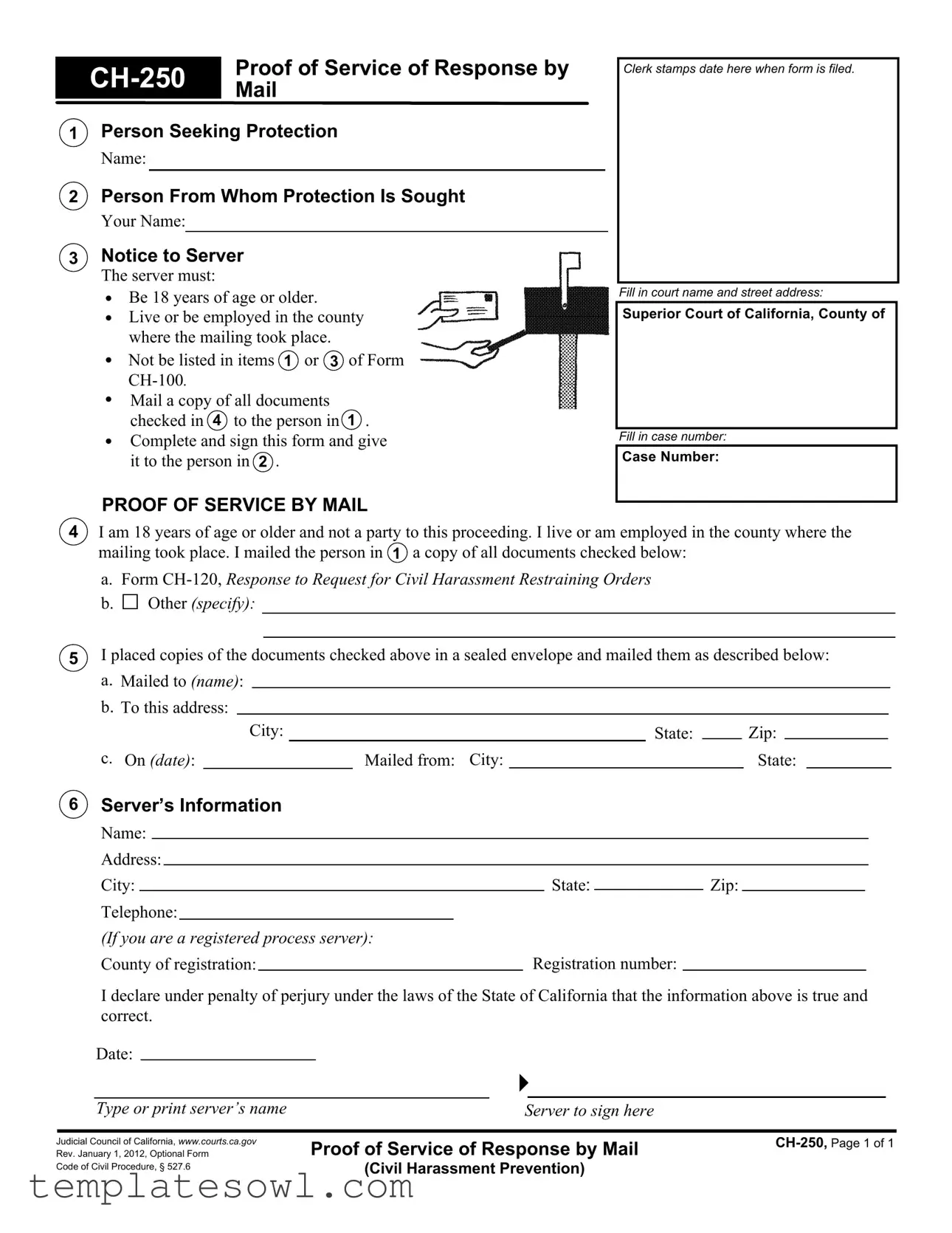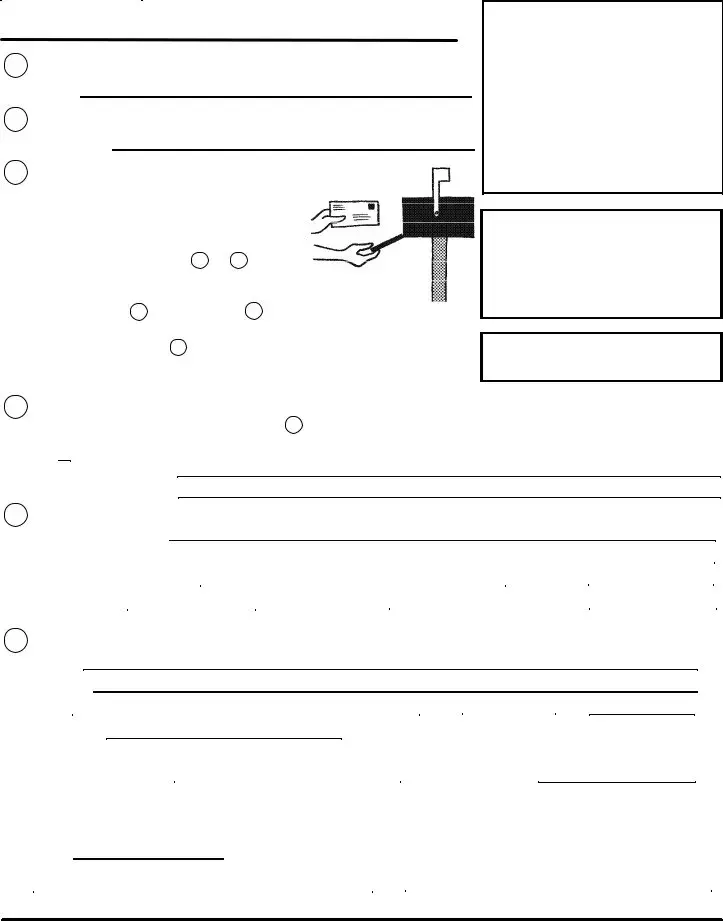What is the CH-250 form?
The CH-250 form is known as the Proof of Service of Response by Mail. It is used to verify that a response has been mailed to a person seeking protection in a civil harassment case. This form ensures that all parties involved receive necessary documents and have been informed of the proceedings.
Who needs to fill out the CH-250 form?
The server, who is responsible for mailing the documents, must fill out the CH-250 form. This person must be 18 years of age or older, and not a party to the legal proceedings. They must also live or work in the county where the mailing occurs.
What documents should be mailed with the CH-250 form?
Along with the CH-250 form, the server must mail a copy of all documents checked in section 4. This often includes the Form CH-120, which is the Response to Request for Civil Harassment Restraining Orders. If there are other documents, they should be specified in the form.
How can the server ensure the mailing process is valid?
The server must ensure that a copy of all required documents is placed in a sealed envelope. It's vital to follow the proper mailing procedures, which include having the correct address, city, state, and zip code listed on the form.
What information is required from the server on the CH-250 form?
The server must provide their name, address, city, state, and zip code. If they are a registered process server, they also need to include their registration number and the county of registration. Additionally, the server must declare the information is true under penalty of perjury.
When should the CH-250 form be filed?
The form should be filed with the court after the server has completed the mailing of the documents. The court clerk will stamp the form with the date when it is filed, verifying its submission.
Can anyone serve the documents, or are there restrictions?
Only a qualified individual can serve the documents. They must be an adult, at least 18 years old, and cannot have any involvement in the case. This ensures impartiality in the process.
What happens if the CH-250 form is not completed correctly?
If the form is not completed accurately, it may lead to delays in the proceedings. The court may reject the filing, requiring the server to correct any errors and resubmit the form to ensure proper service is acknowledged.
Is there a specific format for mailing the documents?
Yes, the documents must be placed in a sealed envelope and mailed to the address provided in section 5. It's important for the server to note the date and location from which the documents were mailed as part of the form's requirements.
Where can I find more information about the CH-250 form?
Additional information regarding the CH-250 form can typically be found on the Judicial Council of California's website or by contacting the local court. These resources can provide assistance and clarification regarding the form and its requirements.


